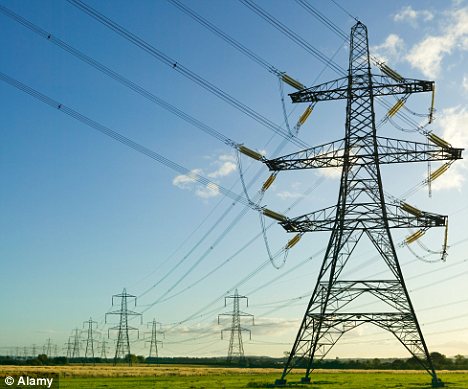Since George Osborne’s autumn statement in 2011, pension funds and their advisors have been discussing the idea of investing in infrastructure. And the logic for this investment is sound: pension funds need low risk, long dated inflation-linked cash flows. They always have, they always will. Happily, the UK needs new infrastructure, much of the funding for which is long-dated and inflation-linked. Banks, which previously funded these endeavours, are no longer funding them, and pension funds seem to be the natural rebound relationship that might just turn steady. Why, then, has making this partnership happen been so tough?
 The spanner in the works is the human element: players from two vastly different industries, pensions and infrastructure, are clearly still circling each other, scoping each other out. Each side needs to understand how the other thinks and operates, and how they are motivated. At dinners set up by Eversheds and Pinsent Masons to facilitate the budding romance, it became clear from the dynamic of the room that infrastructure players are from Mars, while pensions people are from Venus.
The spanner in the works is the human element: players from two vastly different industries, pensions and infrastructure, are clearly still circling each other, scoping each other out. Each side needs to understand how the other thinks and operates, and how they are motivated. At dinners set up by Eversheds and Pinsent Masons to facilitate the budding romance, it became clear from the dynamic of the room that infrastructure players are from Mars, while pensions people are from Venus.
The way forward to a successful partnership and an opening-up of lucrative opportunities is three fold.
First, opportunities and risks in this space must be clearly understood: for the infrastructure industry, the challenge is to communicate these in a way that pensions people can understand. Equally, the pensions industry must meet them half way and step outside their comfort zones to explore the possibilities and allow themselves to be educated.
Second, it is necessary to achieve clarity on how investment decisions are made in practice to allocate to infrastructure: how can the pension fund change its strategic asset allocation to accommodate these new opportunities, and what are the implementation and governance requirements? How should a pension fund investment committee, investment consultant and fund manager work together in making these new ventures happen?
Third, the nature of the infrastructure beast is temporality: if pension funds are to capture these attractive opportunities they must be agile, requiring an advanced governance structure and a clear framework for making investment decisions.
Last year, a successful transaction between Electricity North West (ENW) and a pension fund broke new ground. The opportunity* was to restructure an existing inflation-linked swap between ENW and a bank which had punitive break clauses. This opportunity became available just before Easter and was implemented with a pension fund four weeks later.
*read John Towner’s blog “INDEX-LINKED UTILITY AND PFI SWAPS”
This infrastructure opportunity worked for both ENW and the pension fund. And the reason for the success of the transaction was its satisfaction of those three requirements. Once we, the investment consultant, learned about the opportunity, we also understood the time bound nature of the transaction and that it needed to be done within a few weeks. Therefore, we focused on offering it to our pension fund clients who had a clear decision-making framework in place. That is, the ones that had a Pension Risk Management Framework (step 1), a strategic asset allocation agreed and approved by the investment committee, and who needed long-dated illiquid opportunities that fit their clear risk, return, liquidity and complexity parameters.
The opportunity was to buy a stream of senior unsecured inflation-linked cash flows from ENW in a Special Purpose Vehicle (SPV). This meant the investor would receive long-dated inflation-linked cash flows priced at an attractive credit spread; the deal was priced with an illiquidity and complexity premium of 150bps above where ENW corporate bonds traded (Libor + 170bps) in the iBoxx index.
The opportunity was assessed using four lenses against the client’s Pensions Risk Management Framework.
1. Return: The ENW SPV had an expected return of LIBOR + 3.20% which was comfortably above the client’s required rate of return to reach full funding. The structure also had the extra benefit of providing long-dated inflation linked cash flows to add to their overall inflation hedge ratio.
2. Risk: The cash flows were similar in credit risk to a GBP corporate bond portfolio, i.e. unsecured cash flows to a BBB+ utility. However, this would be an illiquid asset.
3. Relative Value: The transaction was getting an illiquidity and complexity premium of 150 bps over LIBOR.
4. Implementation: The ENW SPV needed to be executed and owned on behalf of the pension fund using a specialist mandate with a fund manager who had both the credit and structuring skills to understand and price the deal.
Lenses 1 to 3 i.e. inflation linked with an attractive risk/return profile on both an absolute and relative basis justified the more challenging implementation than a traditional investment decision.
All in all, this transaction proved that the relationship between pension funds and infrastructure might just flourish: when infrastructure players, fund managers and investment consultants can communicate the opportunity effectively to pension funds, and when pension funds have those vital elements in place, these transactions could form a new method by which pension funds can both build their hedge and achieve the returns they need to reach their funding goals. The key for pension funds, then, is to get ready for the date: get a Pensions Risk Management Framework in place, understand the opportunities in infrastructure so you can spot the difference between a frog and a prince, and make sure your governance framework is up to scratch so that, when the time comes, you’re able to make decisions while the opportunity still exists.
Otherwise, you might just be stood up.
Swiss Re will invest $500m to infrastructure debt, joining AllianzGI and Metlife. If the insurance industry gets to grips with these infrastructure opportunities sooner, pensions might find themselves without a date. And sadly, there aren’t plenty of “inflation-linked return-providing” fish in the sea.


Great article Rob. Liked the point made at the end about insurers also starting to investigate this space.